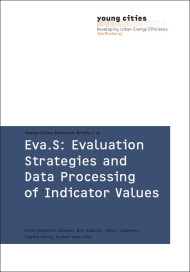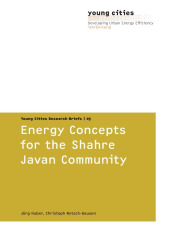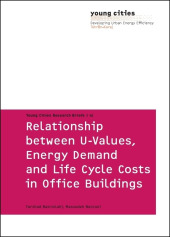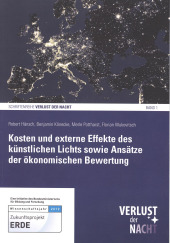Eva.S: Evaluation Strategies and Data Processing of Indicator Values

Format: 14,8 x 21,0 cm
Publishing year: 2014
The evaluation tool Eva.S serves as an instrument for project developer and project participants to handle and present their overall results in a clear and manageable way. Because of the numerous projects and possibilities of Eva.S and its multiple applications and visualization of the processes for interpretation and competent communication to public the indicators values and the investigated evaluation strategy are of significant relevance and acceptance for planning, construction and process orientated monitoring as well as the “grade of achievements” for such projects. The investigated process orientated Indicator values are the fundament for net working, visualization and for understanding of complex systems in project development and success orientated achievements. There are many evaluation and monitoring system on the market like the BNB/DGNB, BREEAM, LEED, African Green City Index (GCI), Asian GCI, European GCI, ESTIDIMA (Pearls), GREEN Pyramids. The newly established Eva.S evaluation tool takes in account most of the pro and contras of all these internationally well accepted concepts. Eva.S represents a challenge as much as a competent opportunity and toolbox for a successful and tailored project development, assessment and management of the progresses. An internationally well accepted evaluation strategy is necessary to enable a relevant, scientific monitoring to capture and assess qualitative and quantitative effects related indicators of the measures planned and/or realized the first time by Eva.S and the Young Cities project. The impact of qualitative and quantitative effect related indicators are rated at the same level. The Young Cities project working phases were attended from the first moment on during data mining, evaluation and finally by visualization of the results by so-called radar diagrams. There are five relevant steps of work flow for managing the data. Starting with data mining and organizing the raw data in matrices and indicator templates. The project specific indicator related data sets are sorted out for feeding the Eva.S evaluation tool for a data check considering the classical criteria for sustainability in the field of economy, ecology and social-cultural aspects by a multi array grid (processor). In a monitoring and decision loop the final results and products as well as strategies are shown for dissemination and rating of the results. The rating system 1-10 (1= best practice; 10= failure) is similar to the common rating tables of international standards to demonstrate in particular the “grade of achievement” of the measures. The development and realization of a project is a process in several distinct project-phases and this will certainly not end with its implementation. Sectorial considerations and therefore possibly inefficient measures in case of changes in the project can be prevented because the presented interaction and feed back effects of the evaluation and monitoring strategy is integrated from the beginning on of the project with the focus on the analysis of work flow and rating checks. The Eva.S evaluation tool was performed by the Young Cities project by the participating project teams in the forum of an internal Evaluation and Monitoring group. From the first beginning on it was designed also for other applications and potential projects and test runs were consequently developed. The first runs were done successfully with data sets of the well known REFINA project and resources consumption management. The Eva.S data bank was serving the Young Cities project by 135 data sets, 3 Fields of Action (FoA) and 25 Work Packages. The Eva.S evaluation tool is operating in Open Source / Mikrosoft Office easy to feed by a Drop-Down menu. The Eva.S project data are evaluated by qualitative and quantitative project specific indicators proved by the classical dimensions of sustainability: socio-cultural quality, economic and ecological quality. The risk analysis part of Eva.S was tested and optimized by a MORIX feasibility study in Real Estate Management (REM) Master Courses. The dynamic and constantly up-dated Eva.S evaluation tool has many potential applications in the field of evaluation and monitoring. Stakeholders are project developer, political decision maker of municipal authorities. Eva.S is from now on present in the internet and offers access world wide: http://yc.liebrenz.info/refina/index.php. There are no barriers and there will be a training and application of Eva.S for legal frame work



